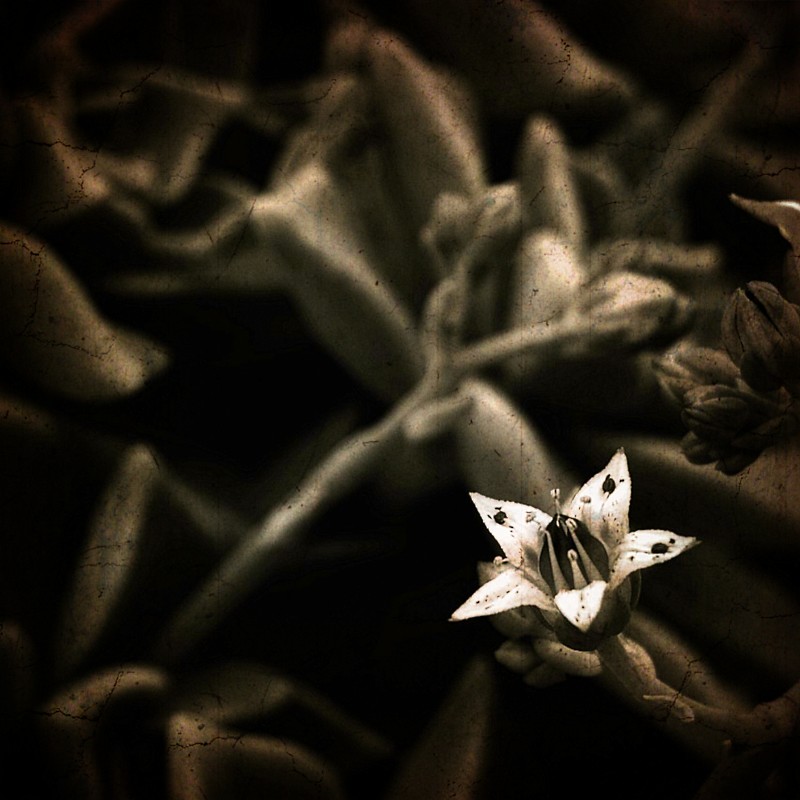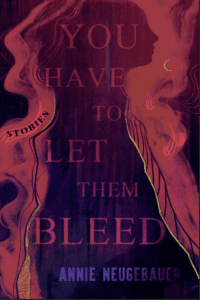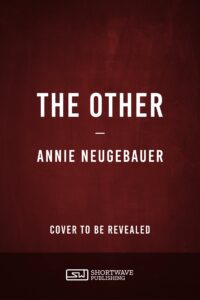
“Catharsis” by Nelio Filipe
There’s a joke/not joke I’ve mentioned to a couple of my writing friends lately about that horrible moment of realization when you see quite clearly that your character is you. You’ve done all this work to develop her and fill out her background and give her a powerful, interesting arc, and then you realize it’s totally you. Most writers have that moment at some point, I think. Some of us very intentionally put ourselves in our fiction. But sometimes it sneaks up on us even when we think we haven’t. We come up against an unexpected intensity of emotion while we’re writing or revising or what have you, and we realize it’s so hard because we’re not just putting it on the page; we’re working through it in our hearts. So my “joke” is that all of my characters are me. Not just the protagonists, either, but all of them, in every book: main character, supporting, minor, even antagonists. They’re all shades of me.
I wonder if to non-writers that sounds like an egocentric statement. I suppose, in a way, it is, but I also believe, in a way, that it has to be. With beginning writers we see a lot of obvious protagonist/author connections because most everyone’s first book is herself in some fictionalized capacity. It’s kind of gentle joke among critique circles (gentle because we almost all do it, so no one’s judging): the main character’s name is suspiciously like the author’s, they have the same job, same ethnicity, age, family history, hairstyle, hobbies, etc. Sure, it might be set in space or 1885 or all the characters are dogs instead of people, but we’re not fooling anybody. I think it’s only natural for people who want to tell stories to start with their own.
As we write more and more, we learn to branch out. We study characterization and grow bolder, trying to write characters who are more and more different from our own experiences. We pour more depth and diversity into our supporting characters and antagonists, instead of just our protagonists. We write people who, we think, aren’t us.
But writing characters that read like people instead of characters is shockingly difficult. It is so freaking hard to create someone from scratch. We have to start from somewhere. And then we have to build a bridge between that starting place and our own ability to write that person we don’t actually know. That bridge is empathy.
I have a theory that reading a really good book is a form of sympathy, but writing a really good book is empathy. Sympathy isn’t enough to bring someone to life. That’s an outside view. We have to go inside, deep. To do that, we have to find empathy. We can’t just feel for them; we have to feel with them.
The way writers find empathy with characters who are unlike us is by finding the places where there is common ground. We design experiences that are similar to ones we’ve had – if not in surface view than at least in interior view. Maybe you’ve never been a queen betrayed by your closest advisor, but maybe you have been a woman betrayed by your closest friend. The situation is no longer real, but the emotion is. In really good fiction, the emotion must be.
Which is why, I think, really good fiction has so much of the author in it. It’s an unavoidable consequence of creating people from thin air. There’s no such thing as thin air; there is only the pulpy matter of our brains and hearts. There is only us, over and over in hundreds of iterations.
I can sense writers objecting. Hell, I’m objecting. One of the suckiest parts of being a fiction writer is how much people assume they can know about you from your work. Many of us, especially those of us who tend toward darker or deeply emotional work, don’t want readers to assume things about us based on what we write. Horror writers, for example, are sick to death of people assuming we write what we write because we were abused or traumatized. Fiction is fiction for a reason, and although it’s vital for writers to try to put ourselves into our work, it’s impossible for readers to know where and in which capacity we’ve done so. Even things people could pick out as distinctly true from me/my life aren’t reliable representations of how I really feel or what really happened. Frequently I borrow a frame and flip the perspective or take an event and twist the reactions or make up an event and keep the emotions… on and on.
So while it’s impossible for readers to definitively know details about a writer’s life from our fictional work, I also think it’s impossible not to see a writer’s heart in their work. And truly impossible to write anything of great value without pouring our heart into it. Sure, things can be just for fun – I do that too, and it’s wonderful – but everything we choose to do says something revelatory about us.
The bad news is that we, as writers, can’t avoid revealing ourselves to readers.
The good news is that catharsis is a real thing, and every time we write ourselves – villain or hero, sidekick or sage – we purge and learn and grow. We offer something of great importance not just to readers, but to ourselves. We bring ourselves to the page over and over again because that is how we create ourselves, from hundreds of tiny pieces viewed from thousands of different angles, eventually fitting together to shape an imperfect and beautiful whole.
The bad news is that if we want to create powerful, memorable fiction, we can’t avoid doing the emotional work of building a bridge of empathy between ourselves and our characters – i.e., writing ourselves over and over. Digging into the muck bucket.
The good news is that this ability to build bridges of empathy between our experiences and the experiences of characters unlike ourselves is the same ability that allows us to not just sympathize but empathize with human beings unlike ourselves. It’s the foundation of understanding and love on a global scale.
The bad news is that this is really, really hard.
The good news is that it’s worth it.
What say you, writers and readers? Thoughts of all sorts are welcome below.
Share this:





Love this and so, so true. And I’m finding once you write that first story that is really, truly your own, the other stories exploring other people and experiences comes so much easier. And it IS so worth it!
Thank you, Lisa! <3 <3
OOh. I loved this post, Annie. Love the concept of the empathy bridge and your distinction between sympathy and empathy. And yes, really good fiction does have a lot of the writer in it. And emotion is SO critical; I’m kind of tired of picking up fiction only to find that it doesn’t ‘go there’ with the emotion (which seems to be published frequently). Rip my heart out, please. Scare me, please! Make me laugh, please!
Absolutely! That’s what I want too, as the reader, but it’s so hard to pull of as the writer. It’s scary to put raw emotion on the page, and tricky to make it come across even when we do find the courage. Guts and skill — worth the work, I think. 🙂 Thanks, Melissa!
This is, as you know, super close-to-home. I accidentally wrote DD about me in ways I never expected. And even the projects I’ve worked on since then end up with so much of me on the page. And always just “shades.” That’s the perfect word for it. I’ll go back and re-read and see myself so unexpectedly and clearly in the lack-of-pauses between words or the silence that follows a period.
Love this post.
Love you.
❤️
It is for most of us, I think. <3 I'm sure there are some savvy beginning writers who know before they do it that they're putting themselves into their stories, but most of us don't see it until after it's on the page.
Good news is, I love everything about this post. Bad news… Nope. Got nothing. I just love this post.
Aw, haha. Thanks, j! <3
I do find I do this. I like how you describe the characters as pieces of ourselves. They most certainly are. Sometimes the good pieces, sometimes the bad.
Indeed. I find I tend to focus on the bad to ultimately explore the good. Scared to ask what that says about me. :)~ Thanks, Traci!
Thank you for giving me something thoughtful and inspiring to read while I was stuck in the car dealership. Much appreciated! I think I agree with you more than I’d like to. I’ve written far less than you, but I definitely see myself in so many of my characters– and some people see things in them that I’ve missed, and that usually reveals something about myself I didn’t know before. It’s a twisted web, but one I look forward to getting caught up in again soon. Thanks for the post.
I’m glad it was a good read for you, Carie! Yeah, I’ve had people catch things I missed too. I think that’s part of why feedback/critique can be so scary sometimes; it’s quite often teaching us about ourselves as much as it’s teaching us about our writing.
Back while studying English in school, I used to love learning little details about an author’s life and then seeing it reflected in their work. It gave me a personal connection to what I was reading – the fact the story was tied to a real person with emotions and a history. And that’s ultimately why I love reading your work the most because of how well I know you. As your BFF, I have intimate behind-the-scenes knowledge of what makes you you, and I’m constantly noticing little reflections of such in everything you’ve written.
That’s really sweet! Really, really sweet. I love you so. Just don’t give away my secrets! XD
I’m saving them all up to sell to TMZ once you’re super famous and shit 😉
I completely agree with the sympathy/empathy thing. So important. And I know that all my characters are kind of facets of me. But the thing I have a worse time with is theme. All my books have dysfunctional parent-child relationships and people in authority turning out to be evil. I really have to change that up! Great post! 🙂
Absolutely, Lexa. I think theme is often just another aspect of character! I do the exact same thing — return to themes over and over. I don’t know that you even need to change it up; there are only so many themes possible and some of them are truly universal and never get old. Thank you so much!
Fascinating post and discussion, even to non-writers! I am reminded of one of my favorite writers, Pat Conroy, who had a cruel, abusive coach and/or father in almost every book he ever wrote. He has admitted that he was working out his life’s tragedies on paper and he drew in legions of readers who loved him and his fictional selves. His female characters were even more complex, as his relationship with his mother was. Before he died a few years ago we had the joy of reading, “My Losing Season” and “The Death of Santini”, which were all about forgiveness, reconciliation, and growth and were memoirs rather than fiction. Lexa & Caitlin’s comments turned my thoughts in this direction, and I agree with Caitlin that the reader wants to know the author. When an author’s words are piercingly beautiful and contain deep questions and truths played out through their characters, we recognize that authenticity and are drawn in.
Thank you! Yes, that’s true. I generally don’t want to know much about the author (I definitely seem to be the outlier there; I don’t favor the type of literary analysis that studies an author’s life to analyze their fiction, for example), but my very favorite authors break that rule. Like you said, if the writing is powerful and personal enough, I’m drawn in even against my predilections. I always want to feel the author personally through their fiction, but usually don’t want to know about their real life. But every once in a while someone comes along who touches me deeply enough that I do want to know about their real life, to see how it could’ve fed that art. That’s good stuff!
Such an interesting discussion! I don’t think I’ve ever started a book wanting to know about the author (unless there was some huge hype about the author). That curiosity usually grows as I keep reading that author’s works. Pat Conroy started with an autobiographical book – The Water is Wide – about his experience as a young teacher. Many years later I started reading his novels but never realized it was the same author. His main character was always a teacher/coach, but I just never connected it. They began making them into movies, & he became more & more famous, and his books broke my heart – each & every one! Somewhere I began to wonder about him and how a Southern coach could be so sensitive & write so beautifully ( stereotype alert:). Then a friend sent me a newspaper article link, and I was, Oh of course! Then I could never get enough about him:)
So many great lines in this post:
“There’s no such thing as thin air; there is only the pulpy matter of our brains and hearts. There is only us, over and over in hundreds of iterations.”
AND
“…every time we write ourselves – villain or hero, sidekick or sage – we purge and learn and grow.”
<3 <3 <3
Lexa brings up a great point about using this mirror of fiction to not only show us how many times it reflects "shades" of ourselves into infinity (yeah, yeah, I know), but to also see repeated themes, motifs, exact scenes or situations in our work. Usually those repetitions are just as much a facet of myself as my character being a hidden (or not so hidden) horcrux within my novel. 😉
Thank you so much, Ashley! Yes, I agree with Lexa too. I definitely see certain themes show up again and again. What gets really weird and interesting is when I see recurring motifs or scenes or whatever that don’t actually come from or tie to my life. Why, for example, does so much of my work relate to the sea? It’s like a horcrux for our psyche!
Pingback: Writing Links 6/5/17 – Where Genres Collide
I think you’re totally right that drawing someone from thin air is next to impossible and even the characters not like us are still related to us in some way.
Thanks Nina!
So true, for me at least. It’s like art. The artist always puts himself or herself in a painting whether it’s abstract or realism. My husband’s paintings always have faces in him, some that he’s unaware of until I point them out to him. Sometimes they’re animals; sometimes humans. Most always they’re him.
What a beautiful example! Yes, most always they’re us. <3